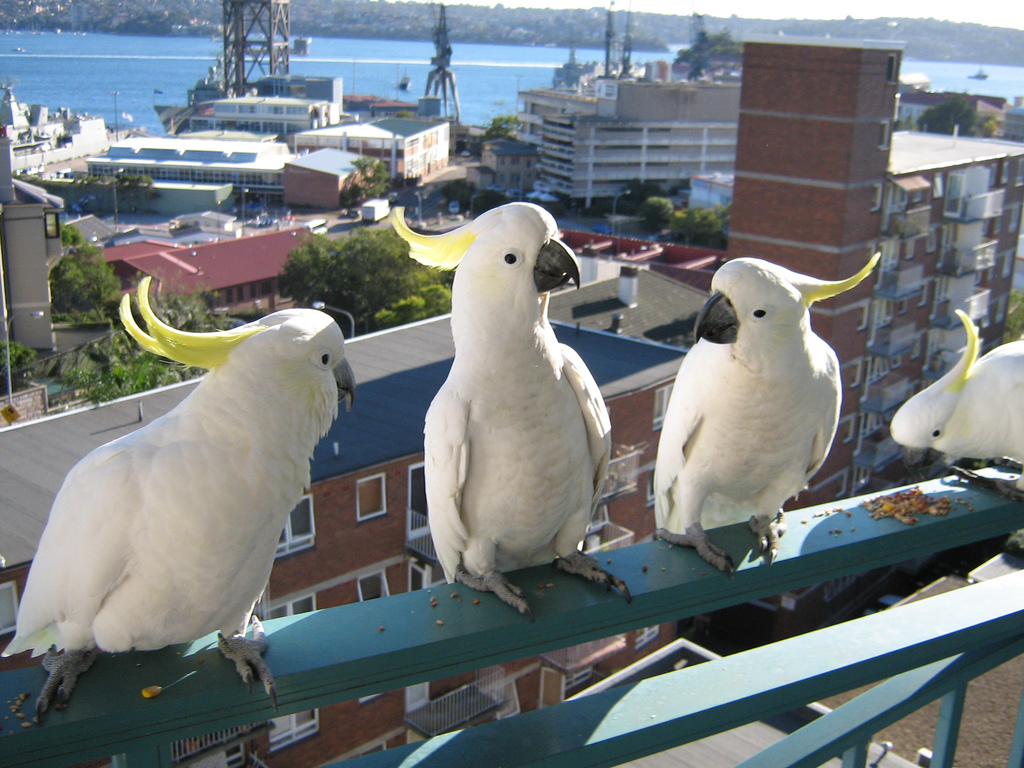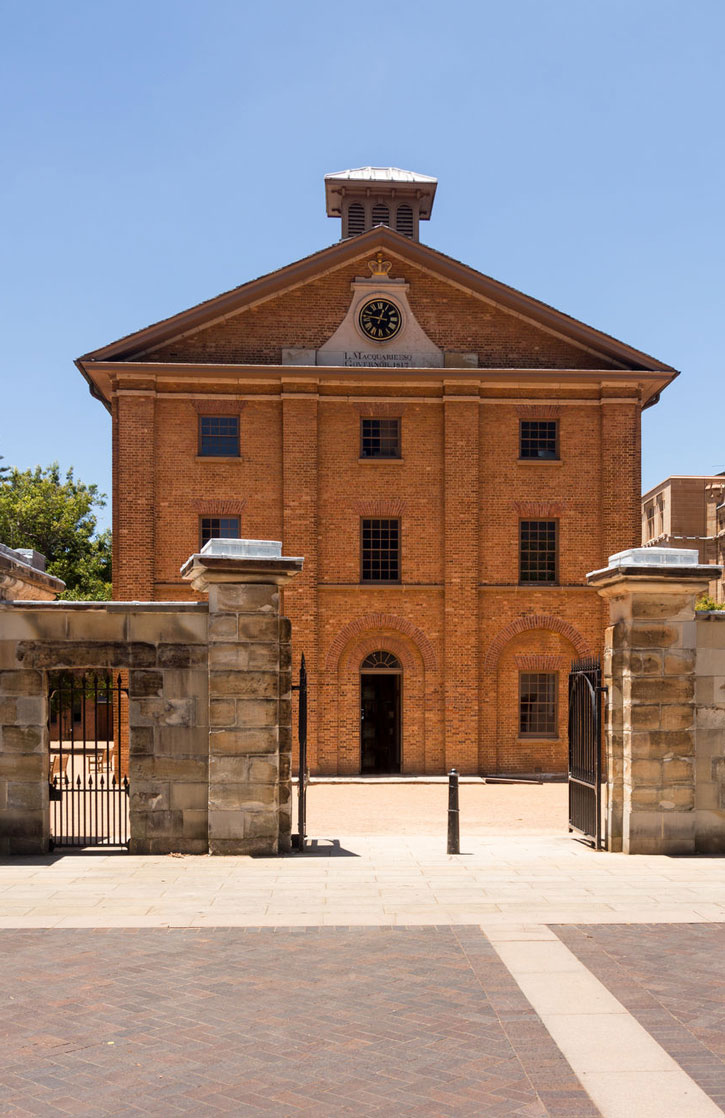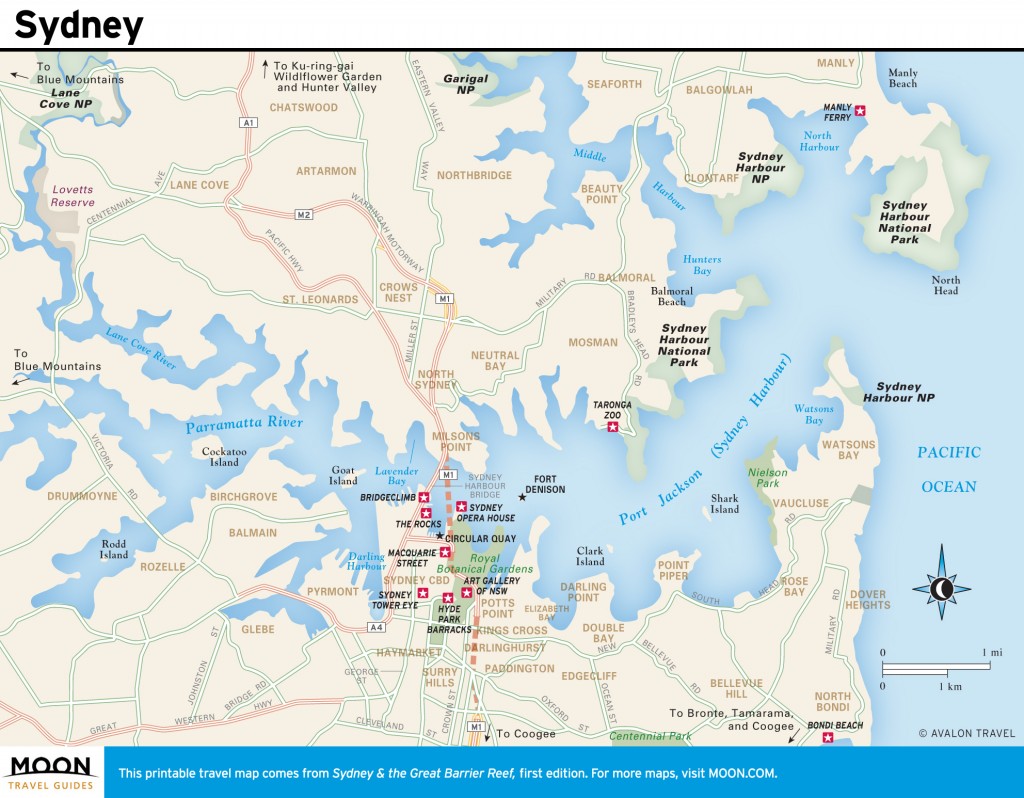
Cockatoos in Sydney Harbor. Photo © Sarah Baker, licensed Creative Commons Attribution.
Like all of the world’s great cities, Sydney is brimming with things to see and do, and demands time. With nearly five million people calling Sydney home, it is not only Australia’s largest city but also larger than the inner city of Los Angeles, and even if you would move here you’d never get to see everything or experience it all. So you will just have to try to squeeze as much into your allocated time as possible. And it all depends on what your interests are.If you are a history buff, numerous very good museums and heritage buildings could keep you busy, but you can get a good idea of Sydney’s and Australia’s history within a couple of days, taking in the main museums and sights, such as the Hyde Park Barracks, Macquarie Street, and The Rocks.

The Hyde Park Barracks was built in the early 1800s to house convict men and boys. Photo © Steven Heap/123rf.
If you are a pleasure seeker, seek no further and head for the harbor and the beaches, then off into the city for some bar-hopping, excellent food, and great shopping. Depending on whether you want to learn to surf from scratch or if you are in need of a deep tan, then several days will be needed.
But most likely you are in Sydney because you have finally come to see the great continent down under and, while not the capital, Sydney is still the city to see when in Australia and you will want to get a good idea of what it’s all about, get a basic understanding of the history, see the iconic landmarks, and either see or sample Bondi Beach. In that case you should allocate around three days.

Sydney
The handy thing in Sydney is the public transport. Yes, ask any local and they are likely to moan, but visitors can get a MyMulti card for either a day or a week (the weekly pass is worth it if you use it for more than two days) and literally hop on and off any bus, train, or ferry within the city limits and get everywhere easily. Download the public transport app on your phone. You can type in where you wish to go and it will tell you exactly how to get there with type of transport, directions if you will have to walk some, and time allowances.
And most likely you won’t have to worry about the weather too much. Sydney does have seasons but depending on where you are from, even the winter (July-August) is still a lot more pleasant than in the rest of the world.
According to the Australian Bureau of Meteorology, Sydney has on average seven hours of sunshine a day. Its temperature ranges from an average winter minimum of 9 and a maximum of 17 degrees Celsius to a peak summer maximum average of 26 degrees.
Sydney’s rainfall averages 1,213 millimeters a year, with an average of 11 wet days per month. More than 40 percent of this rain falls between March and June. But if you want to play it safe, then spring or fall are the best months, when it’s not too hot to walk along the city’s pavements and not so cold that you can’t sit outside and enjoy the views. Spring generally has a little less rainfall than fall, but both have perfect temperatures for exploring.
Sydney does not have any great fluctuations in visitor numbers over the year, but bear in mind that the country’s school summer holidays are across Christmas and New Year, so that is a bit of a hot spot. That said, there is no better place to be over New Year’s Eve than Sydney as long as you can cope with the crowds and the inflated prices. But that’s only for a couple of nights and then it gets back to its normal—if pricey—self.
Excerpted from the First Edition of Moon Sydney & the Great Barrier Reef.